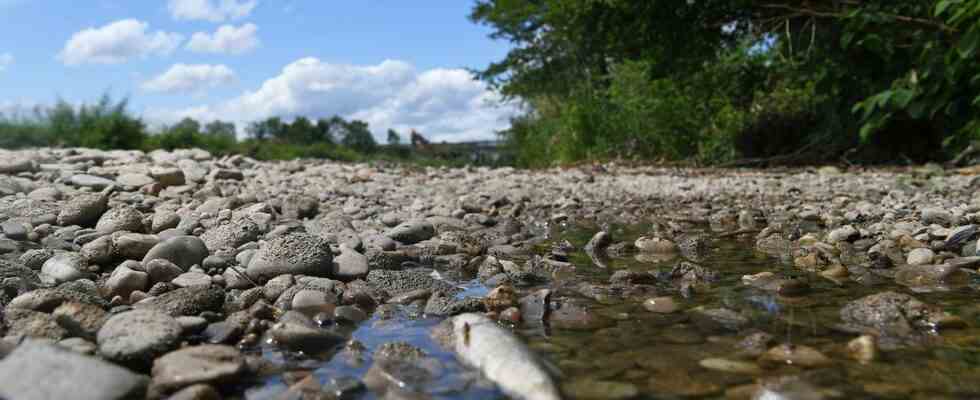“Episodes of high heat have accelerated in recent years and these phenomena are taking hold, hence the importance of prevention plans because nothing is improvised”, launched Richard Chemla, vice-president for the ecological transition of the Nice Côte d’Azur metropolis, during a press conference on the “drought”, the “heat wave” and “the protection of water reserves” this Wednesday.
Before any announcement or presentation of this “great prevention plan”, the president of the metropolis wanted to reassure. “We will never run out of tap water for decades to come,” repeated Christian Estrosi several times. To support his point, he then mentioned “the work undertaken for twelve years” on the “securing of drinking water” and these “water reserves of Vésubie and Var”, in particular with “a network of the network “. And to “save” this water in the face of the drought in which the department currently finds itself, the metropolis provides all the municipalities in its territory free of charge with “kits” to install on their taps which make it possible to reduce their consumption by 20%. of water.
Greening the city
In addition to water reserves, the metropolis has implemented a “city air conditioning” plan for several years. “To reduce temperatures in the city as much as possible, you have to plant and add water”, summarizes Nicolas Martin, geographer-cartographer who studies the urban climate of Nice and also lecturer at the University of Nice Sophia-Antipolis.
This is how Christian Estrosi presented this project, which involves “the end of thermal public transport in the metropolis by 2025”, “encouraging walking with refreshing spaces”, and “recreating a current of air thanks to the extension of the green belt”. He also re-announced the goal of having “one tree per inhabitant” in Nice by 2026.
The metropolis of Nice will also “very soon” use “clear coatings in all new city development projects to reflect light without absorbing heat and thus fight against heat islands”. According to the geographer, “the objective is to put back a lot of vegetation and avoid concreting as it could have been done before because the ground must communicate with the atmosphere”.
Health effects
Another important point: the effects on health. For Pierre Gibelin, cardiologist, specialist in pathologies as well as vascular problems, also present at this press conference, “vegetation is what works best” but “it will not be Central Park” and “it will not is not enough at present”.
And the health impacts are already there. He develops: “The heat wave has direct consequences, in particular on infants, pregnant women but also the disabled, the elderly and those who have certain chronic diseases or who take certain medications such as migraine medication. Without forgetting the people who are on the street, those who work outdoors. You have to be very careful then! The recommendations are to “sleep in a cool place at night” and “to hydrate regularly during the day, at the rate of 1.5 L or even 2 L per day, but no more to balance the salt and water in the body. »
He then underlines the importance of the “choice of trees that depollute” in this urbanization plan because “the heat wave added to pollution still creates new diseases”.

